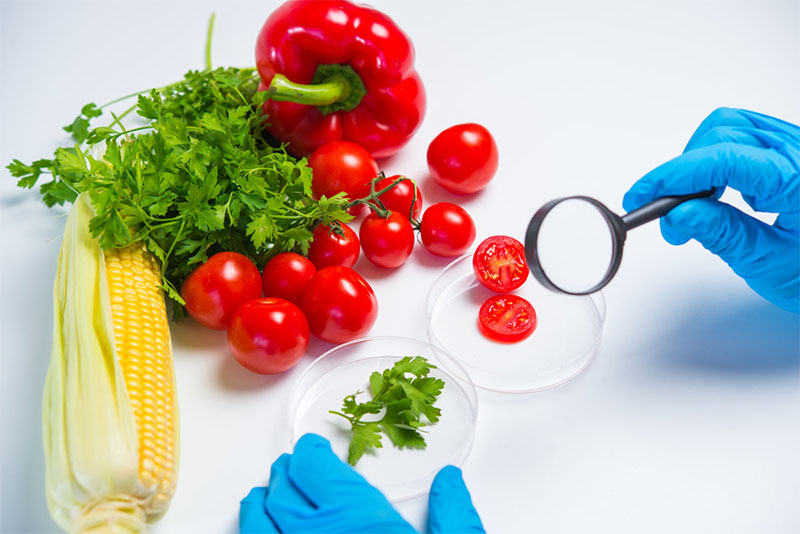The physiochemical properties of foods (e.g., rheological, optical, stability, flavor) are indicators of food quality, sensory, and safety. Understanding the physiochemical characterizations of foods is not only essential for food preservation and food quality assessment, but also important for consumers’ health.

Lifeasible is a leader in food physical and chemical properties testing. We offer a broad range of techniques and in-depth expertise to determine the physiochemical characterizations of raw materials and processed food products, including:
Labeling of product weights, volumes, and dimensions are vital for the control of product quality. The labeled weight, volume, and/or dimension are expected to accurately reflect what is in the package.
Water activity (Aw), which determines how much water is available for microbial growth, can affect food odor, color, flavor, texture, and shelf-life. The chance for microbial spoilage is reduced with lower Aw. The Aw can be measured using a water activity meter where the Aw value for pure water works as a standard.
Moisture content in food is important for food quality measurements, food yield and shelf life determination, as well as legal labeling requirements. Lifeasible provides a variety of methods for moisture measurement, such as the Karl Fischer method, distillation method, dielectric method, hydrometry method, refractometry method, oven drying methods, dynamic vapor sorption method, etc.
The food structure can influence food texture. For example, the bubble structure can affect the softness of aerated foods and bakery products, as well as the crispiness for starch-based snacks. We offer a wide scope of techniques (e.g., scanning electron microscopy, X-ray micro-CT, light and confocal laser scanning microscopy, etc.) to qualitatively and quantitatively determine the structure of food.
Food textural attributes, such as hardness, fracturability, compressibility, shear force, and springiness, are important attributes for food sensory. They can affect the way food tastes and how it feels in the mouth.
The rheological properties of food materials are important in determining the texture as well as their behavior when subjected to physical forces. For instance, margarine should be spreadable when it is carried out of a refrigerator, while it must be hard enough to withstand its own weight.
Experts at Lifeasible can provide multiple methods for particle size determination, including machine sieve screening, laser diffraction, and static light scattering.
The color of foods is an important criterion for food quality evaluation; and color measurement is used to predict visual and chemical changes in foods. The most widely used method for color measurement is the Hunter “L a b” system, where “L” represents lightness (100)/darkness (0); “a” is positive with redness and negative for greenness; “b” measures yellowness when "positive" and blueness when "negative".
Viscosity measures the flow resistance in soups, beverages, shake mixes, and syrup solutions. Consistency measures the distance that a sample flows in a predefined time interval. Viscosity and consistency can be measured via the electromagnetic measurement approach, where viscosity (in centipoise) and temperature (in °C) are measured simultaneously.
Accurate temperature measurement is important for the monitoring of food safety and food quality.
Brix value refers to the concentration of soluble solids which is measured by a refractometer and is equivalent to the percentage by weight of sugar. Brix is an important parameter during the production of fruit juices, jams, and jellies. Brix is also important in controlling microorganisms in foods. The higher the Brix value is, the less water is available for microbial growth, as the sugars are bound to the free water.
The pH is an indicator of the amount of acid or base present in a food. The pH level can not only affect the growth of microorganisms, but also affect the flavor, color, and texture. The pH of food products can be measured using a pH meter.
Fat /oil quality and content depend on the composition, size, type of processing, and type of oil used of the product. Deficiency of fat can cause off-odor or off-flavor in foods, while higher fat products are more susceptible to rancidity. Rancidity can be detected by the peroxide value, thiobarbituric acid (TBA) reactive substances assay, Schaal test, or smoke point.
Thermal properties include melting point, boiling point, vapor pressure, degree of crystallization, and glass transition temperature. Thermal properties can be analyzed by thermal analysis techniques such as differential scanning calorimetry (DSC).
The salt content refers to the content of inorganic anions and cations left after food combustion, which can be determined by liquid-chromatographic techniques.
We also provide analysis of other physiochemical properties such as specific optical rotation, total volatile basic nitrogen, trimethylamine nitrogen, malondialdehyde, caffeine content, and so on.
With a wide variety of testing methods and technologies, qualified analytical equipment, as well as experienced and skilled staff, Lifeasible can provide our clients with reliable and comprehensive testing results for food physical and chemical characterizations. Welcome to contact us for inquiries and further information.